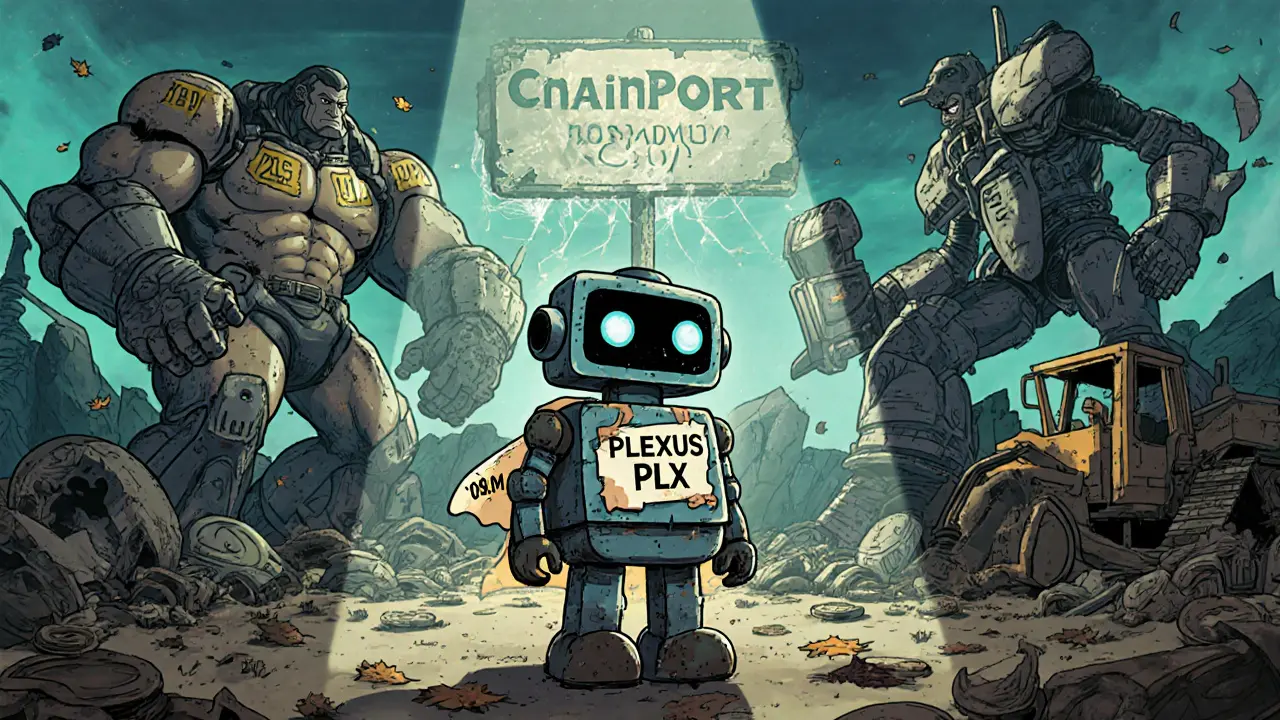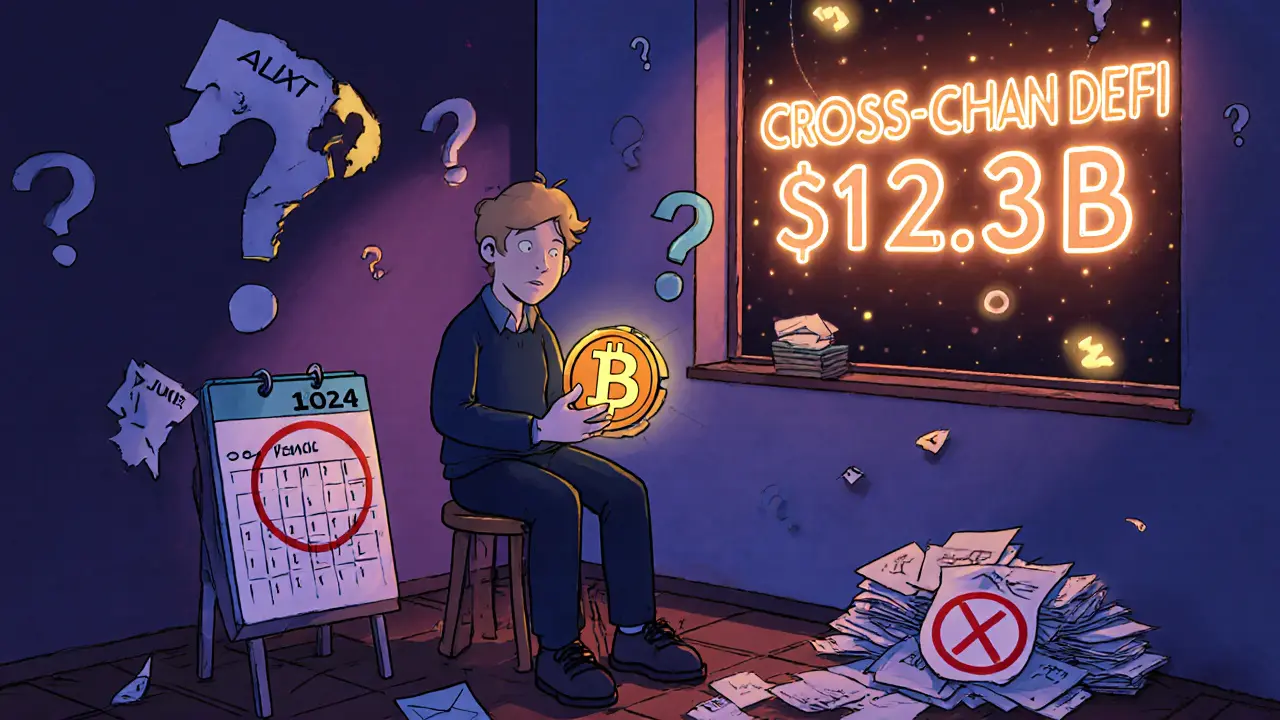PLEXUS Cross-Chain Swap Calculator
Swap Estimate
How This Compares to Competitors
Based on Q3 2024 data from the article:
| Platform | Average Slippage | 24h Volume | Token Listings |
|---|---|---|---|
| PLEXUS | 3.2% (varies with trade size) | $0 | 15+ chains |
| THORSwap | 2.1% | $22.5M | Extensive |
| LI.FI | 1.8% | $8.7M | Extensive |
| ChainPort | 2.4% | $4.1M | Extensive |
Warning: PLEXUS shows higher slippage and $0 trading volume, which means your swap may not execute as expected.
Critical Risk Information
PLEXUS has no liquidity for trades above $500, resulting in slippage exceeding 5%. Competitors like THORSwap and LI.FI offer better pricing (under 2% slippage).
This is a HIGH-RISK swap
Plexus (PLX) is a decentralized finance (DeFi) platform built to solve one of the biggest headaches in crypto: switching tokens across different blockchains without jumping through hoops. Launched in November 2023, it doesn’t just let you swap ETH for USDT-it lets you swap ETH for SOL, or AVAX for DOT, all in one click, even if those tokens live on totally separate networks. That’s the promise. But does it work in practice? And is PLX worth your time-or just another niche project fading into obscurity?
How PLEXUS Actually Works
Most cross-chain tools make you do a series of steps: bridge your tokens from Ethereum to Arbitrum, swap them on one DEX, then bridge again to Solana, then swap again. It’s messy. PLEXUS cuts that down to one transaction using something called the Cross-Chain Routing Protocol (CCRP). At its core, CCRP uses an algorithm called Theta to scan liquidity across 15+ blockchains in real time. It finds the cheapest, fastest path-even if it means routing your ETH through Polygon, then BSC, then Solana-to get you to your final token. You don’t need to manage multiple bridges or track gas fees on each leg. You just pick your tokens, hit swap, and wait.Behind the scenes, PLX is an ERC-20 token running on Arbitrum. Its smart contract address is 0xFB85...8670Cc, and it’s designed to be used within the PLEXUS ecosystem for governance and fee discounts. If you hold PLX, you can vote on future upgrades, propose new chain integrations, or influence how trading fees are distributed. That’s the theory, anyway.
PLX Tokenomics: Supply, Allocation, and Value
The total supply of PLX is capped at 500 million tokens. As of mid-2024, about 198 million are in circulation. That means roughly 40% of the supply is still unissued or locked up. The breakdown looks like this:- 13.46% (67.32M PLX) went to private and pre-sale investors
- 11.38% (56.88M PLX) was sold in public IDOs
- Remaining tokens are allocated to team, advisors, ecosystem development, and liquidity mining-though exact numbers vary by source
Here’s the problem: valuation is all over the place. CoinMarketCap says PLX is worth $1.98 million. CoinGecko says $132,000. That’s a 15x difference. Why? Because CoinMarketCap is using a higher circulating supply estimate, while CoinGecko’s data reflects actual trading activity. The real issue isn’t the number-it’s that 24-hour trading volume is $0. Zero. Not $10,000. Not $100. Nothing. That means nobody’s buying or selling PLX at scale. If you can’t trade it easily, the token’s value is mostly theoretical.
Who’s Competing With PLEXUS?
PLEXUS isn’t alone. THORSwap, LI.FI, and ChainPort are bigger, better-funded, and way more popular. Here’s how they stack up:| Project | Market Cap | 24h Volume | Token Holders | Avg Slippage | Centralized Exchange Listings |
|---|---|---|---|---|---|
| Plexus (PLX) | $132K-$1.98M | $0 | 2,530 | 3.2% | No |
| THORSwap (THOR) | $187M | $22.5M | 85,000+ | 2.1% | Binance, KuCoin |
| LI.FI (LIFI) | $215M | $8.7M | 42,000+ | 1.8% | OKX, Bybit, Gate.io |
| ChainPort (PORT) | $89M | $4.1M | 31,000+ | 2.4% | Bitget, MEXC |
PLEXUS’s biggest advantage? Simplicity. One click. No multi-step routing. But that’s useless if the liquidity isn’t there. Users report slippage over 5% on trades above $500. THORSwap and LI.FI average under 2%. And while PLEXUS claims to support 15+ chains, it doesn’t list them clearly. You’re guessing if your token is supported. Competitors publish full chain lists and bridge partners.

Real User Experiences
Reddit users have mixed feelings. One person said they moved ETH to SOL in one click-something that used to take three separate transactions. That’s powerful. But others describe failed swaps during Ethereum congestion. Trustpilot gives PLEXUS a 2.8/5 rating. Common complaints: “Transaction stuck for hours,” “Slippage wiped out my profit,” “No customer support.”On the flip side, users who only trade small amounts (under $200) report smoother experiences. The interface is clean, the steps are simple, and gas fees are low because everything runs on Arbitrum. But if you’re trying to move $1,000 or more, you’re likely to hit liquidity walls. That’s not a bug-it’s a design limitation. PLEXUS just doesn’t have enough depth in its pools.
Is PLEXUS Safe?
The smart contract hasn’t been fully audited. Blockchain Auditor Group flagged “moderate risk” due to unverified code components. No critical exploits have been found, but there’s no public audit report from firms like CertiK or Hacken. That’s a red flag for serious DeFi users. Most top platforms publish full audit results. PLEXUS doesn’t.Also, the team is anonymous. No names, no LinkedIn profiles, no interviews. That’s not illegal-it’s common in crypto-but it makes it harder to trust long-term commitment. When projects like THORSwap or LI.FI have teams with track records, users feel more confident. With PLEXUS, you’re betting on code, not people.

Market Reality: Is PLEXUS Growing or Dying?
The numbers don’t lie. In February 2024, PLX’s market cap was $280,000. By August, it dropped to $132,000. The all-time high was $0.03751. Today, it’s trading around $0.00066. That’s an 82% drop from its peak. Meanwhile, competitors raised millions in venture funding. THORSwap got $15M. LI.FI got $18M. PLEXUS raised $318,750 total through IDOs.GitHub activity hasn’t been updated since June 2024. The roadmap promises support for 25+ chains by Q1 2025. But with no recent commits, no team announcements, and zero trading volume, that roadmap feels like a wish list. The cross-chain DeFi market is projected to hit $12.3 billion by 2026. PLEXUS currently holds 0.02% of that space. That’s not a foothold-it’s a speck of dust.
Should You Use or Buy PLX?
If you’re a curious beginner with $50 to spare and want to try a one-click cross-chain swap? Go ahead. Use it for tiny trades. Learn how it works. It’s a decent demo of what’s possible.If you’re looking to invest? Think twice. No trading volume means no liquidity. No liquidity means you can’t sell when you need to. No audits mean you’re trusting unverified code. No team means no accountability. And with competitors offering better slippage, more chains, and real funding, PLEXUS has no clear path to survival.
There’s no shame in being early. But being early to a project with no traction is just gambling. PLX isn’t dead yet-but it’s on life support.
How to Get Started With PLEXUS
If you still want to try it:- Get a wallet that supports Arbitrum (MetaMask, Rabby, or Trust Wallet)
- Add the Arbitrum network to your wallet (RPC: https://rpc.ankr.com/arbitrum)
- Buy some ETH or USDT on a centralized exchange and send it to your Arbitrum wallet
- Go to the official PLEXUS website (verify the URL-scams exist)
- Connect your wallet and pick your tokens
- Check the estimated slippage and gas fee before confirming
- Only trade small amounts until you’re sure it works for you
Never invest more than you can afford to lose. And never store PLX on an exchange. Always move it to your own wallet.
Is PLEXUS (PLX) a scam?
No, PLEXUS isn’t a scam in the traditional sense-there’s no evidence of fraud or rug pull. But it’s extremely high-risk. The project lacks transparency, liquidity, and development activity. It’s more accurate to call it a failed experiment than a scam.
Can I buy PLX on Coinbase or Binance?
No. PLX is only available on decentralized exchanges like Uniswap and PancakeSwap. You won’t find it on any major centralized exchange. That’s a major red flag for adoption and liquidity.
Why is PLX’s price so low?
Because no one’s buying it. With $0 in 24-hour trading volume, there’s no market demand. Price is determined by supply and demand. If no one’s trading, the price stays near zero-even if the tokenomics say it should be higher.
Is PLEXUS worth holding long-term?
Unlikely. Without funding, development, or exchange listings, the project has no path to growth. Competitors are outpacing it in every area: liquidity, user base, and partnerships. Holding PLX is speculative at best and likely a loss at worst.
What’s the best use case for PLEXUS right now?
Testing the interface for small, low-risk swaps under $100. If you want to experience a one-click cross-chain swap without the complexity of multi-step bridges, PLEXUS works fine for tiny amounts. But don’t rely on it for anything important.


jack leon
November 20, 2025 AT 16:19PLX is a ghost town. Zero volume? That’s not a bug, it’s a tombstone. I’ve seen dead projects with more heartbeat than this.
One-click swaps mean nothing when your money’s stuck in a black hole.
They’re not building a platform-they’re building a museum exhibit for failed crypto dreams.
Chris G
November 21, 2025 AT 15:33PLX tokenomics are a joke. 500M supply 198M circulating but zero volume means the price is fiction. CoinMarketCap and CoinGecko disagree because one is guessing and the other is counting actual trades. The real metric is liquidity not market cap. No audits. No team. No future.